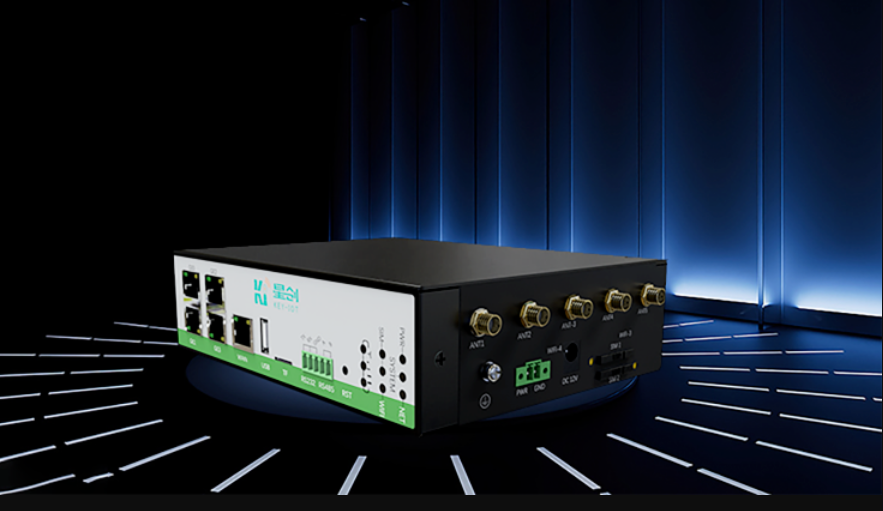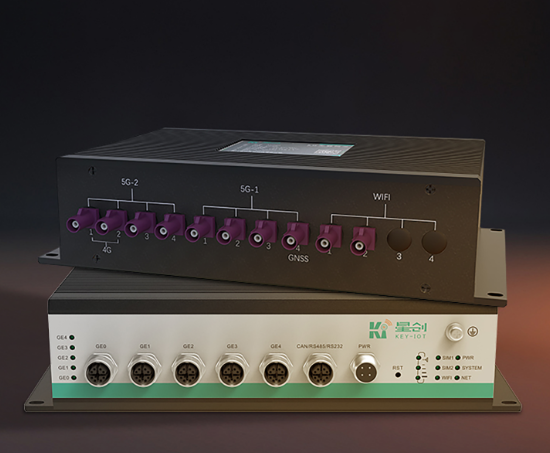Global Industrial Router Pricing Analysis and Selection Strategies

I. Global Industrial Router Price Ranges and Functional Tiers
Industrial router pricing varies significantly depending on communication standards (4G/5G), hardware specifications, and environmental adaptability. Based on international mainstream brands (e.g., Moxa, Cisco) and KEY-IoT’s SV900 series positioning, pricing tiers are categorized as follows:
- Entry-Level ($500–$1,500)
- Features: Single SIM, IP40 protection, basic VPN, 10-20 device connections
- Use Cases: Warehouse environmental monitoring, small-scale AGVs
- Key Specs: -25°C to +55°C operating temperature, 100Mbps throughput
- Enhanced Tier ($1,500–$3,500)
- Upgrades: Dual-SIM hot standby, edge computing (Python scripting), multi-protocol support (MODBUS/DNP3)
- Durability: IP54+ protection, 15KV ESD resistance
- Key Specs: -40°C to +75°C wide-temperature support, 500Mbps throughput
- Standard Tier ($2,500–$5,000)
- Features: Sub-6GHz bands (NSA/SA dual-mode), 5G+4G redundancy
- Performance: ≤30ms end-to-end latency, 50+ concurrent devices
- Use Cases: Port autonomous trucks, smart factory lines
- Premium Tier ($5,000–$10,000+)
- Advanced Features: mmWave (FR2 N257/N258), MEC edge computing, TSN support
- Industrial Robustness: IP67 protection, MIL-STD-810G vibration resistance
- Key Specs: 600Mbps throughput, -40°C to +85°C full-range operation

II. Pricing Drivers and Technical Correlations
1. Communication Standard Cost Differences
- 5G Module Premium: 5G hardware costs 3-5× higher than 4G due to:
- Baseband chips (e.g., Qualcomm SDX55 vs. 4G SDX24: $180 vs. $50)
- RF components (e.g., high-frequency filters: $25–$80)
- Certification Costs: 5G GCF/PTCRB certifications add ~$15,000 per model
2. Interfaces and Protection Grades
- M12 Connectors: $30–50 per port additional cost vs. RJ45
- IP Ratings: IP40 to IP67 upgrades increase costs by ~20% (sealing components/testing)
- Extreme Temperature Design: -40°C cold-start circuits raise hardware costs by 15%
3. Edge Computing Capabilities
- Processors: ARM Cortex-A72 ($35) vs. entry-level MT7621 ($8)
- AI Accelerators: Adding an NPU (e.g., Huawei Ascend 310) increases cost by $200+

III. Cost-Effective Selection Strategies
1. Requirement Prioritization Framework
FeatureBudget Tier (<$3,000)Performance Tier ($3,000–$7,000)Flagship Tier (≥$7,000)Device Capacity<20 nodes20–100 nodes>100 nodes + multi-tier networksLatency Tolerance>50ms acceptable30–50ms<30ms (TSN required)EnvironmentIndoor/mild climatesDusty/vibration-prone areasExtreme temps/EMI-heavy zones
2. Cost Traps to Avoid
- Misleading “5G” Claims: Verify SA mode and industrial bands (e.g., N77/N78). Avoid NSA-only devices.
- Chipset Substitution Risks: Demand explicit baseband chip models (e.g., Qualcomm SDX55 > SDX24).
- Total Cost of Ownership (TCO):
- Energy Efficiency: Premium 5G routers achieve 3× higher Gbps/W efficiency than 4G.
- Maintenance: Industrial models (≤1% annual failure rate) save long-term costs vs. consumer-grade solutions (≥15% failure rate).
3. Case Study: Smart Warehouse Deployment
- Option A (4G Entry-Level): Initial cost: $1,200/unit. Three module replacements in two years → TCO: $3,600.
- Option B (5G Enhanced SV900): Initial cost: $3,800/unit. Zero failures over three years; 67% higher bandwidth utilization.
IV. SV900 5G Industrial Router Positioning
KEY-IoT’s SV900 series targets the $3,200–$6,500 mid-high market with unmatched industrial-grade features:
- True 5G LAN: 3GPP Release 16 certified; bypasses NAT for direct cloud-to-vehicle communication (37% latency reduction).
- Dual-Module Redundancy: 5G+4G failover with <0.7s recovery.
- Military-Grade Interfaces: 8× IP67-rated M12 connectors tested for 100,000+ mating cycles.
V. Market Trends and Recommendations
- 5G Cost Declines: 5G module prices expected to drop to 1.5× 4G by 2025, boosting industrial adoption.
- Modular Design: Prioritize routers with edge computing/TSN expandability (e.g., SV900 supports AI coprocessor add-ons).
- Regional Pricing: U.S./EU models cost 15–25% more (stricter certifications); Asian brands (e.g., KEY-IoT) leverage supply chain advantages.
Conclusion
Industrial router selection requires balancing upfront costs, operational reliability, and TCO. For 24/7 low-speed autonomous operations, prioritize 5G dual-module redundancy and wide-temperature designs like the SV900. While premium routers demand higher initial investment, their reliability and efficiency deliver ROI within 18–24 months.

